@media screen and (max-width:991px){.is-mobile-50p{display:block;max-width:50%!important;margin:0 auto!important;}} Every coffee enthusiast knows there can be some strict rules…
When I go for coffee, I usually go for classics such as Espresso or Americano or maybe even some coffee with milk like a Cappuccino or a Latte. And I’m sure, many people do the same. But if I do have a bit more time, my real favorite is an Aeropress! As a barista, I know that in reality, there are so many different kinds of types of coffee drinks out there. Sometimes it’s a challenge even for me to remember most of them.
In this guide, I will try to cover all the known types of coffee drinks that I’m aware of. If I missed anything, definitely drop me a line and I’ll add it in!
You might ask: why there are so many?
Well, in the world of coffee, people love to experiment with different brews, the water temperature, beans, milk, grinding and million other things with one goal in mind, to extract that perfect taste and flavor into a cup of coffee.
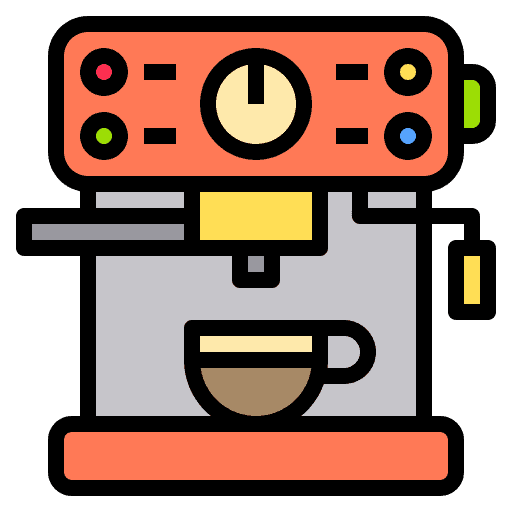
Before we jump in into the actual list of coffee drinks, let’s break them down into top categories or simply put, into main ways of preparing coffee:
Espresso based is the most common and popular way of brewing coffee in your local coffee shops. But, what is an espresso-based brewing method really mean?
It simply means that your coffee drink is based on a shot of espresso usually into an espresso cup. First, espresso is brewed and then hot water or milk can be added to prepare your favorite drink.
The world of coffee is constantly evolving, espresso-based brewing might be the standard in majority of coffee shops around the world, but there is always an alternative way of doing things.
Alternate brewing methods usually involve using a paper filter (except, French Press uses mesh), a percolator and a carafe or a decanter. The process of brewing is very similar between common alternative brewing methods, heated water passes through coffee grounds absorbing and extracting coffee and then goes through a filter. Extracted coffee grounds are left in that filter. Important to note, during this process a certain time is allocated for blooming (releases carbon dioxide) and coffee brewing for a longer extraction. As a result, you get a tasty black coffee drink.
The most common alternative brewing methods are:
Aeropress, Chemex, French Press, Pour over or V60, Drip, Geyser
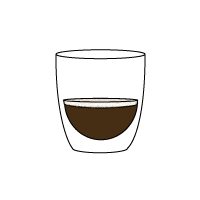
Espresso shot (aka Short Black) came to us from Italy and is brewed using an espresso coffee machine. You might not realize this, but espresso is by far the most popular drink since many coffee drinks use it as a base. Find out more about espresso and coffee
A shot of espresso is brewed using an espresso machine by forcing very hot water with high pressure through a coffee tablet, where the tablet consists of finely ground tamped down coffee. This process is also called “Pulling a shot”. The overall extraction process takes about 20-30 seconds producing about 30 ml of syrupy beverage or an espresso.
As a result, we get a very thick concentrate with a Crema(creamy foam) on top.
read full description✔️ Normal volume: 1-1.5 oz. (25-35ml.)
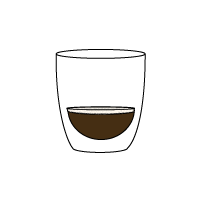
Ristretto stands for short in Italian, it takes the same amount of coffee grounds as in espresso, and only half of the water volume. Making the end result, even more, concentrated coffee than espresso. In plain words, Ristretto is a shorter or restricted version of espresso with a slightly sweeter taste and less bitterness.
read full description✔️ Normal volume: 0.5-1 oz. (15-25ml.) [ prof ]
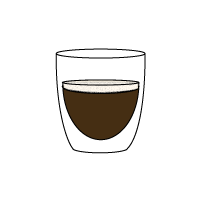
In Italian doppio stand for double or a double espresso! And therefore, Doppio is a double shot of espresso or basically two shots of espresso in one cup. Doppio is brewed the same way as espresso by pouring hot water through a portafilter with a double spout into one cup.
read full description✔️ Quick recipe: 2 shots of espresso

Americano, once again an Italian term for an espresso shot with extra hot water on top of it. A bit of history, an Americano was invented during World War 2 by European Baristas to make the coffee lighter in taste and more drip-style like for American soldiers’ preferences in taste. Read the full article about Americano.
Americano is a very popular coffee drink throughout the world and especially in the U.S., people consume on a daily basis, some prefer adding milk and sugar to it.
read full description✔️ Quick recipe: 1 shot of espresso + 3 oz. of hot water
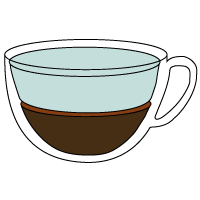
If you want stronger Americano coffee then go for Long Black Coffee. It’s very similar to Americano, except, it uses two shots of espresso and just a bit less hot water to enhance the taste.
✔️ Quick recipe: 2 shots of espresso + 3 oz. of hot water
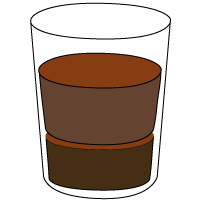
Red Eye Coffee also is known as Eye Opener or a Shot in The Dark! As all these names suggest, this one is a super-strong drink with lots of caffeine, please be careful with this one, especially, if you are not used to high caffeine dosage.
This drink will wake up and give you that energy kick to get you going in the morning.
Red Eye consists of a cup of drip-filter coffee topped with an espresso shot!
Black Eye is a variation of Red Eye Coffee, but even stronger! Instead of one shot of espresso, two are added to the American drip-style cup of joe.
read full description✔️ Quick recipe: 1-2 shots of espresso + 6 oz. of drip brewed coffee
Drip coffee, also known as Filter coffee, this is a brewing method that involves using a filter, and it is the most common method that is used in people’s homes. In order to make the coffee, grounds are placed within a filter, and then heated water is processed through the filter. This causes the water to absorb the flavor of the grounds as it drips through to the carafe at the bottom. Read full article about how to use Drip Coffee Maker
read full description✔️ Quick recipe: 2 tbsp. of medium grind coffee + 2 cups of water

In batch brewing all dependence on the technology. This is the most efficient and the fastest way to serve quality black coffee. The brewing process is very similar to regular coffee machines and involves paper filter, the difference is in volume and quality. Modern batch brew coffee machines can produce lots of tasty black coffee and ideal for coffee shops, caterers, and anything that requires volume.
read full description✔️ Quick recipe: ½ lb. of medium-coarse grind coffee + 1 gal. of water
AeroPress Coffee is a very popular drink between coffee pros and baristas. If you google for an AeroPress Coffee recipe, you will get tons of them, with all kinds of different approaches. I recommend sticking to the basics to get you started. Later, you might get so addicted to this device, that you might consider creating your own AeroPress recipes. AeroPress How-To
It was invented by a physicist Alan Adler in 2005. He wanted to alter the quality of the regular drip coffee maker and slow speed of a pour-over and came up with the AeroPress. AeroPress is a simple gadget made of chamber tube, plunger tube with the seal and filter cap with the paper filter.
The process of making an AeroPress Coffee looks like this. First, place a paper filter in the filter cap and attach it to the chamber tube. Second, add coffee and hot water, steep it for 10-50 seconds. Third, using the plunger tube, press it through the paper filter. The filter will stop sediment and oils.
As a result, you will get a tasty, clean cup of coffee without any sludge and bitterness!
read full description✔️ Quick recipe: 2 tbsp. of medium-fine grind coffee + ½ cup of hot water

The Chemex Coffeemaker has been invented by Peter Schlumbohm in 1941. It has an elegant and stylish hourglass-type shape made of borosilicate glass and uses a special type of filter similar to other alternative brewing methods.
read full description✔️ Quick recipe: 5 tbsp. & ½ tsp. of medium grind coffee + 2 cups of hot water
A few important facts about Chemex:
Making Chemex Coffee is easy! It uses the infusion method, first, you need to add coffee grounds. Second, add a little bit of hot water, let it bloom for a min or so. Third, add hot water slowly in spiral motion to ensure the brewing process takes about three minutes and Done!

This brewing method is very portable and easy for beginners to use. Most pour-over funnels are designed to sit on top of a coffee mug. Using a paper or mesh reusable filter, you pour hot water over coffee grounds in slow, circular motions as the brewed coffee drips into the cup below. Some pour-over makers are made as an all-in-one funnel and carafe so that it’s easier to make more than one cup at a time. Pour Over step-by-step
read full description✔️ Quick recipe: 4 tbsp. of medium-fine grind coffee + 2 cups of hot water
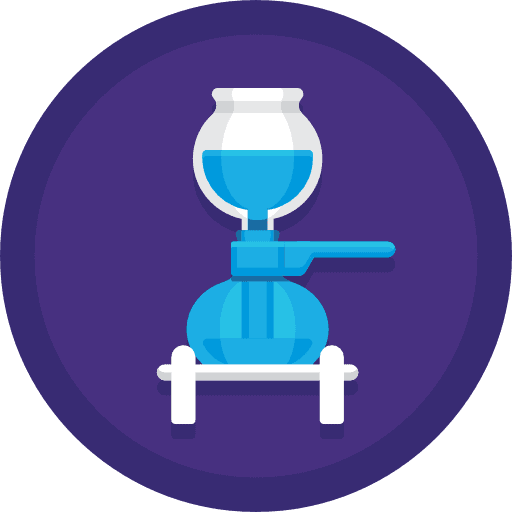
Also known as siphon coffee, vacuum coffee is made by a two-part brewer where boiling water in the lower chamber pushes water vapor into the upper chamber where the coffee grounds sit. Once the coffee is brewed, it descends back into the bottom chamber through a filter. Then, you pour it and add any milk or sweeteners to it as you please!
read full description✔️ Quick recipe: 3 tbsp. & 2 tsp. of medium-fine grind coffee + 1 & ½ cup of hot water
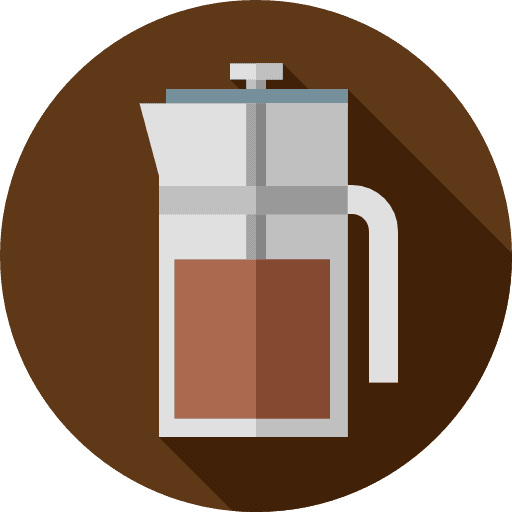
Press pots are basically a cross between pour-over and percolated brewing methods. Different countries argue about the origin of the first press pot, but French press is the most popular name for this brew style. Using coarsely ground coffee, you pour boiling water into the cylinder press pot. After you let it sit for about five minutes, use the mesh plunger to filter out the grounds so you can pour your cup and enjoy! Guide to French Press
read full description✔️ Quick recipe: 4 tbsp. & 2 tsp. of coarse grind coffee + 2 cups of hot water

Immersion coffee isn’t specific to one type of device. It’s a type of brew style that many different types of coffee makers use. Any brewing device that allows coffee grounds to be fully submerged by hot water could be considered an immersion coffee maker. This includes the French press, the Aeropress and certain siphon coffee makers.
read full description✔️ Quick recipe: 4 tbsp. & 1 tsp. of medium-fine grind coffee + 2 cups of hot water
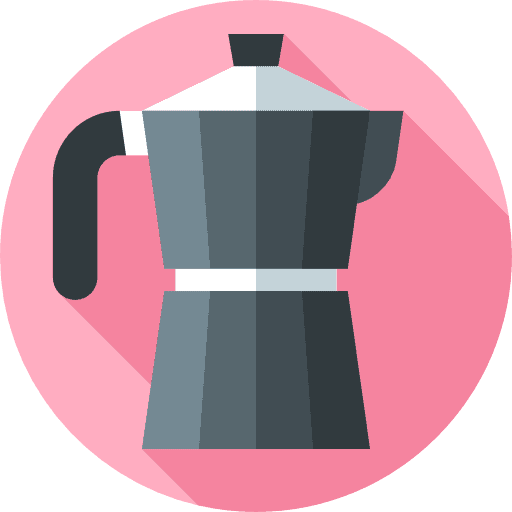
At a glance, the moka pot looks a lot like our friend the siphon coffee maker! They function in a similar way, too. A bottom chamber full of water is placed on a heat source, like a stove top. Once the water reaches the right temperature, it boils up through a filter chamber full of coffee grounds. It keeps on going until spills over the inner spout of the upper chamber. After it’s done, all the water in the bottom chamber is gone and you pour the upper chamber’s coffee into a cup. Most moka pots are designed to brew anywhere between 1 to 12 cups.
read full description✔️ Quick recipe: full basket of medium-coarse grind coffee + water (fill to the line in the bottom of the brewer)
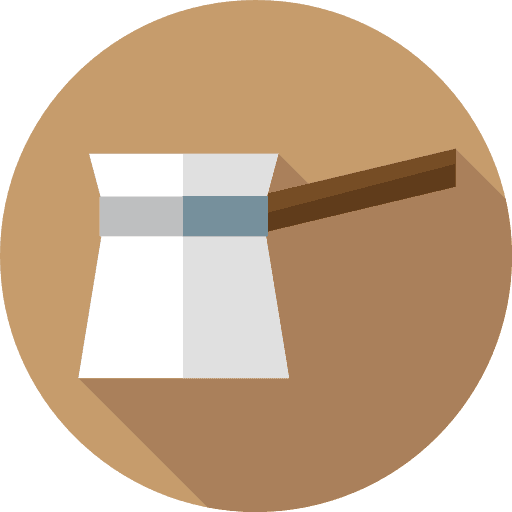
This is a type of immersion coffee where the coffee grounds are never filtered out from the water before serving. You use the finest ground coffee possible and a special, long-handled brewing pot called an ibrik or cezve. You bring the coffee to a boil, pouring the first foamy portion into small serving cups. Then you return it to the heat boil and pour another portion again, twice, before finally drinking it.
read full description✔️ Quick recipe: 4 tsp. of fine grind coffee + 1 cup of water

Water-soluble, or instant, coffee has a bad reputation because it’s not freshly ground or freshly brewed, two hallmarks of quality brewing. Instead, instant coffee dissolves in hot water — this means it can be made right in the mug rather than with extra brewing equipment. The ease of use and affordable price of most instant coffees make it a drink of choice for budget-conscious people who need a super fast coffee routine.
read full description✔️ Quick recipe: 1 tsp. of instant coffee + 1 cup of hot water

In Spanish, cascara is the word for the husk or skin of products like coffee cherries. Normally, the husks of coffee cherries are discarded, but some people actually make a beverage from steeping these cherry husks! It’s something that looks and tastes more like a cup of tea than a coffee, and is usually described as having a fruity, sweet sort of flavor.
read full description✔️ Quick recipe: 2 tbsp. of Cascara + 1 cup of hot water

You may find it hard to believe, but some of the most expensive coffee in the world comes out of a wild cat’s butt. In Indonesia, the civet cat eats coffee cherries whole, but its body can’t digest the pits, or coffee beans, inside the cherry flesh. It’s thought that the fermentation the beans undergo inside the cat’s stomach impart more citric acid into the bean. They’re collected from civet droppings, washed (thank goodness!) and processed normally thereafter.
read full description✔️ Quick recipe for drip method: 1 & ½ tbsp. of medium grind coffee + 2 cups of water
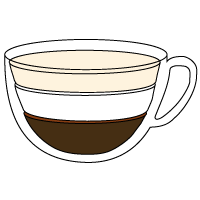
Italian monks, called capuchins for the distinct hoods of their robes, inspired the name of this espresso drink that’s served with a thick milk foam cap. Traditionally speaking, it’s only called a cappuccino when it is served hot and equal ratios of espresso, steamed milk and froth topping. Compare cappuccino to other drinks guide
read full description✔️ Quick recipe: ⅓ of espresso (1 shot) + ⅓ of steamed milk + ⅓ of milk foam
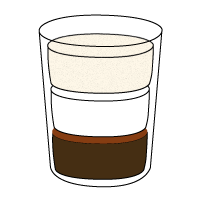
The latte was born when American consumers wanted a mild-flavored version of the bold Italian cappuccino. Rather than a one-third split between the espresso, steamed milk and frothy cap, a latte has a quarter-inch of foam and a lot more steamed milk to espresso. Flavoring lattes with one or more dessert syrups is a popular way to drink a latte. Instead of steamed milk and foam, lattes can be made iced and topped with whipped cream.
read full description✔️ Quick recipe: 1 shot of espresso + 8-10 oz. of steamed milk + ½ inch of milk foam
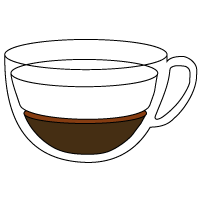
I’m not sure where I land on the debate between whether a flat white, which originated in Australia, is just a wet cappuccino or a stronger latte, but I do know one thing: it’s delicious. Getting the proportion of espresso to steamed milk right is important, of course, but the most distinctive feature of a flat white is the foam. Microfoam, to be exact, which is said to be made by carefully steaming milk to produce the uniquely dense and creamy milk froth.
read full description✔️ Quick recipe: 1 shot of espresso + 4 oz. of microfoam steamed milk

The name “Frappuccino” is specific to Starbucks, who have gone so far as to trademark the name for their line of ice-blended coffee drinks. Other cafes may call them frappes, instead. Don’t let the fancy terms fool you, this is just a coffee milkshake! There are a variety of ingredients that can be used to achieve the desired consistency, but it should be a creamy, frozen treat with a strong coffee flavor.
read full description✔️ Quick recipe: 1 shot of espresso + 1 cup of ice + ½ cup of milk + 3 tbsp. of brown sugar

As you can see from several descriptions here, a lot of coffee drink names are code for ratios between espresso, milk and milk foam. Many started as regional slang for proportion adjustments on the basic cappuccino. Here, the piccolo latte calls for a single full shot of espresso (approximately 30 milliliters) or a double ristretto (which is approximately 20 milliliters). This is served in a demitasse glass and topped up with steamed milk.
read full description✔️ Quick recipe: 1 shot of espresso + 4-5 oz. of steamed milk + milk foam

A breve by most standard definitions is the same espresso-to-milk and milk foam as a cappuccino, but the milk in this case is actually half-and-half. Half-and-half, like its name implies, is 50% whole milk and 50% heavy cream. When steamed, this makes a rich, dense milk foam and creamy mix of steamed half-and-half and espresso. Read full article about Breve
read full description✔️ Quick recipe: ⅓ (1 shot) of espresso + ⅔ of steamed mix with cream and milk
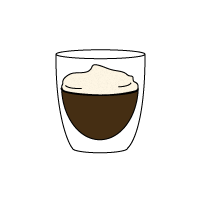
Often ordered as an espresso macchiato, this drink is simply espresso with a spot of milk. The word “macchiato” can be translated to mean spotted, stained or marked. If you order this rather than make it at home, take note that some coffee shops will use a dollop of milk foam instead of a drop of steamed milk. If you have a preference between the two, make sure to let the barista know. Read the full article about Macchiato.
read full description✔️ Quick recipe: 1 shot of espresso + spot of milk foam
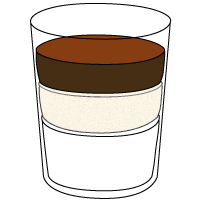
The typical espresso macchiato is made by adding the spot of milk to the espresso once it’s in in the serving cup. A latte macchiato, however, reverses the concept of an espresso macchiato. In this drink, the steamed milk is “stained” with espresso, which means the espresso is poured into the milk. Like the difference between a cappuccino and a latte, the latte macchiato has more milk than an espresso macchiato.
read full description✔️ Quick recipe: 8-10 oz. of steamed milk and milk foam +1 shot of espresso
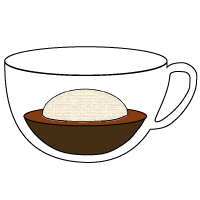
Another Italian-inspired drink that seems more like a dessert, the affogato starts with a scoop of gelato or ice cream in the cup. Then, a shot of espresso is poured on top. This creates an instantly iced, creamy concoction with a bold espresso flavor. Variations on the affogato include splashes of complementary liqueurs alongside the shot of espresso.
read full description✔️ Quick recipe: 1 scoop of ice cream + 1 shot of espresso
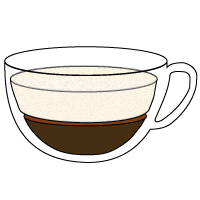
It’s not easy to get all professional and hobbyist baristas to agree on exact measurements for many espresso drinks, but the cortado is roughly assumed to be a 1:1 ratio of espresso to steamed milk. With the cortado, a frothy, foamy or otherwise textured steamed milk isn’t the goal. The milk is steamed for the sake of reaching a desirable serving temperature when mixed with an equal part of freshly brewed espresso. Read full article about Cortado
read full description✔️ Quick recipe: ½ (1 shot) of espresso + ½ of steamed milk

Cafe Au Lait is a French term meaning “coffee with milk.” While the origin of the term is unknown, the first cafe au lait was likely created in France in the early 1800s. The drink is made by combining French Press coffee (or drip coffee) with scalded milk, and it is typically served in a cup or mug. Cafe au lait has a similar flavor to a latte, but it is typically made with a darker roast coffee and has a higher coffee-to-milk ratio.
read full description✔️ Ratio: 5 oz. black coffee + 5 oz. scalded milk
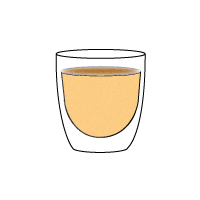
Some variations on the classic cappuccino rely on a specific type of serving cup in order to achieve the proportions of espresso and milk that its recipe calls for. In this case, the Gibraltar is a specific cup name served from San Francisco’s Blue Bottle coffee shops. The size of the glass tumbler holds two shots of espresso and a bit steamed milk. This means it tastes somewhere between a flat white and a macchiato in terms of potency.
read full description✔️ Quick recipe: in Gibraltar cup: 2 shots of espresso + steamed milk
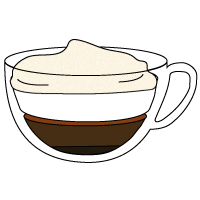
I may be one of those coffee enthusiasts who think mochaccino and mocha mean the same thing, but to be fair, it’s not clear if they should or shouldn’t, anyway. Both terms are used to describe an espresso-based drink made with chocolate, but the details can vary from there. A mocha at most coffee shops is a latte with chocolate added as a sweetener and flavor. Others might argue a mochaccino is closer to a cappuccino in terms of steamed milk and espresso ratios. Either way, they’re usually topped with whipped cream instead of froth.
read full description✔️ Quick recipe: 1 tbsp. of chocolate syrop + 1 shot of espresso + ⅓ stramed milk + ⅓ whipped cream

Coffee can be prepared in many different ways in Vietnam, but its French-inspired coffee culture favors bold brews and inventive additions. It’s common to find coffee made with yogurt or even egg whipped with condensed milk. Their specialty iced coffee is also a world-renowned favorite.
✔️ Quick recipe: 3-4 tbsp. of condensed milk + 1 cup of ice + ½ cup of strong brewed coffee

This boozy little concoction is a mixture of coffee, Irish whiskey, a bit of sugar and cream. The recipe calls for the cream to be dolloped on top of the coffee and for the coffee to be sipped through the cream. When you order out, most places will make this drink with drip-brew coffee, but others may prefer to serve it with espresso shots, instead.
read full description✔️ Quick recipe: 1 tsp. of brown sugar + 1 shot of Irish whiskey + ½ cup of drip brewed coffee + whipped cream

There are a lot of health claims associated with bulletproof coffee, but it remains popular for its rich, satisfying flavor. Bulletproof coffee is an inspired take on yak butter tea, but rather than yak butter or tea, it’s coffee and the consumer’s preference when it comes to sources of butter. Bulletproof coffee also uses an MCT oil as an additional health boost.
read full description✔️ Quick recipe: 1 cup of brewed coffee + 1-2 tbsp. of butter + 1-2 tsp. of coconut butter.

As you learned earlier, an Americano is just a shot of espresso served with added hot water. This mellows out the flavor of the espresso considerably. When you put it over ice, it’s not necessary to use hot water. Some Americano drinkers don’t even add water when they want their drink on ice — pouring espresso over a serving of ice melts enough water to make the perfect iced Americano as it is. Ideal iced coffee drink for the summer.
read full description✔️ Quick recipe: 2 shots of espresso + 1 cup of ice + ½ cup of cold water
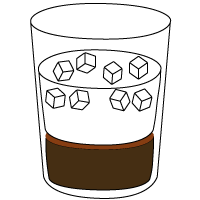
Another popular iced coffee drink is the Iced Latte, a coffee drink that is made with espresso and cold milk. It is usually served over ice. Iced latte can be flavored with syrups or other additives. Iced latte is a refreshing and energizing drink that is perfect for hot summer days.
✔️ Ratio: double shot of espresso + ¾ cup whole milk + i cup of ice

As the name suggests, this is a type of coffee that’s brewed using a cold method rather than a hot one. Technically speaking, any grind size of coffee can be used to start a cold brew – but frequent fans of this method suggest a coarse grind and a plunger-style filter when it comes time to strain it. Opinions differ on whether it should be left on a counter to brew at room temperature or kept in a fridge, instead, since the “cold” in this definition just means “not hot”.
read full description✔️ Quick recipe: 3 oz of coarse grind coffee + 2 cups of cold water

If you’re like me, you’re used to seeing tonic water used in cocktail-making. So, seeing it on the coffee shop bar is a bit shocking. And intriguing. This is an iced coffee that sports a bolder espresso flavor that bubbles and pops with carbonated goodness. Light roast coffees that feature a brighter flavor profile work great for this drink, especially with a twist of lemon to finish it off.
read full description✔️ Quick recipe: 1 shot of espresso + ½ cup of tonic + ½ cup of ice + 1-2 slice of lemon
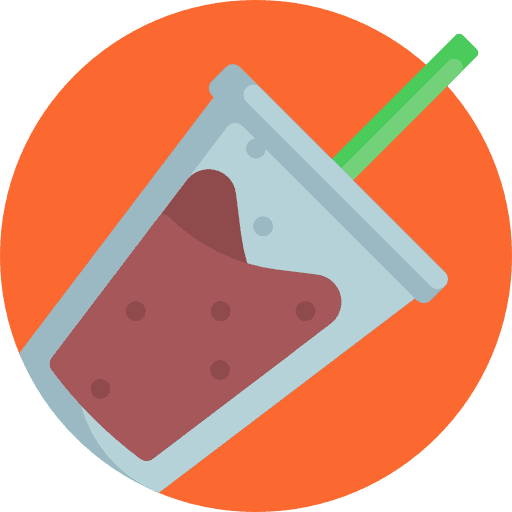
This is another innovative take on the balance of potential health benefits and preferred flavor qualities in a cup of coffee. Instead of using CO2 to carbonate the coffee, nitrogen gas turns coffee into a fizzy, foamy, bubbly brew. People who love this kind of coffee praise the natural sweetness the nitro blast gives the taste of this drink, plus the thick, foamy quality approximates the richness usually found when milk is added.
read full description✔️ Quick recipe: 4 cups of drip brewed coffee + 2 tbsp of brown sugar + 1 chargers of nitrogen or CO2 gas

It doesn’t get much more common or basic than asking for an automatic drip-brewed coffee with milk, sugar optional. However, depending on where you are in the world, the humble shot of espresso may be more popular as a morning drink.
Cappuccinos and lattes are also exceptionally popular orders and espresso-based drinks that consumers like to try to make in the home. Regional variations on milk-to-espresso ratios result in drinks that measure somewhere between a cappuccino or a latte actually win out in terms of local favorites. That’s true in Australia, where the flat white is popular, or in Spain for the cortado.
Newer coffee culture enthusiasts sing a lot of praises for cold-brew options. You have to be pretty well-equipped in the kitchen to pull of nitro-brewing at home, but a simple pitcher of water and coarsely ground coffee can yield a delicious black coffee cold brew that you can enjoy with milk and sweeteners of your choice.
The fussier the brewing method is or the more layered a flavor profile becomes, the less likely it is to sweep the masses into a new trend. This is why contraptions like vacuum coffee makers or the Aeropress remain in the realm of the niche aficionado.

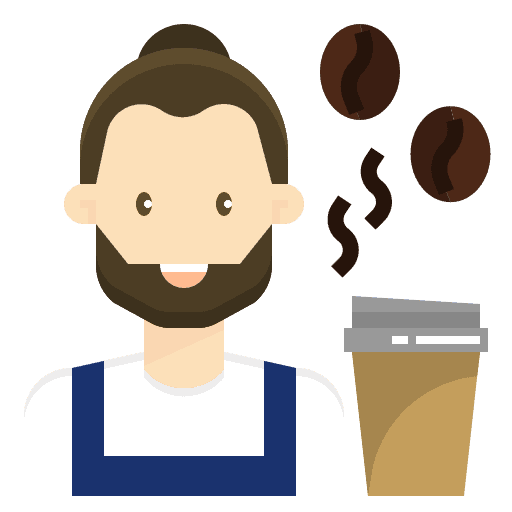
Now that we’ve fully explored different types of coffee drinks and coffee names, you can count yourself a real pro whether you’re ordering at the cafe or experimenting with making coffee drinks at home. The more you play around with espresso and milk ratios or flavorings and brewing methods, the more confident you’ll be trying out whatever new coffee names show up on the local shop’s menu.